Learning Center
reading
Release responsibility to the students during the cycle
october 24, 2013
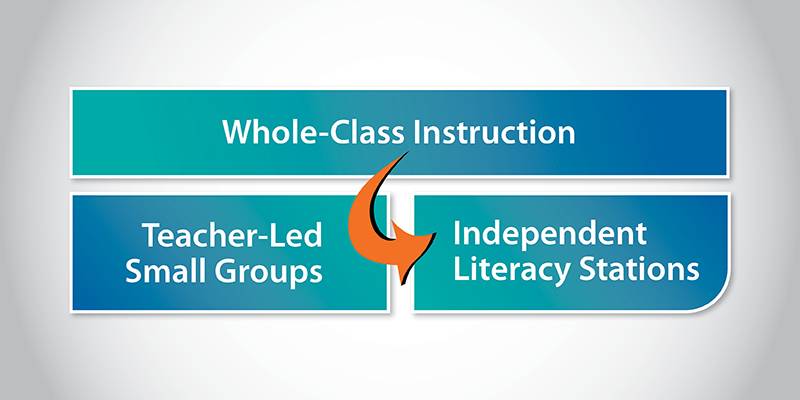
Each reading skill you teach your students within the 90-minute reading block should go through three phases of instruction:
1. A skill is first modeled within whole-class mini-lessons.
2. Then, the students experiment with the skill in teacher-led, small-group instruction.
3. After coaching and guiding the students in small groups, the skill is added to an independent literacy station for continued practice.
This three-phase cycle honors the gradual release of responsibility. The scaffold allows teachers to guide students toward independent mastery of difficult reading skills.
Let’s examine an after-reading summarization skill as it is pushed through the cycle.
PHASE 1: Model the skill within a whole-class mini-lesson series.
Introduce the summarization skill known as Somebody…wanted…but…so…then… (SWBST). Explain to the class that these words represent a framework for students to insert details and construct a summary.
Reveal a previously-read and well-known text to students. Model the SWBST framework (e.g., The Empty Pot) using our downloadable pocket-chart cards. Then reveal a second example using a previously-read text. Conclude this initial lesson by facilitating the completion of an all-class SWBST frame with student input (e.g., The Little Red Hen).
Repeat this whole-class lesson over the next several days using a variety of previously-read texts including literature, historical narratives, informational texts, etc. (NOTE: This framework is effective with any informational text structured as a problem/solution.)
PHASE 2: Guide students to experiment with the skill within teacher-led small groups.
Using leveled texts, students will read and orally summarize the key supporting details. Hand each student one of the SWBST pocket-chart cards and conduct a shared summary.
While students are orally summarizing their parts, the teacher scribes the writing onto an enlarged graphic organizer. (NOTE: The graphic organizer can be recreated onto large chart paper, projected using the PDF version, or displayed as a Notebook file on the Smart Board.) This scribing activity teaches students how to record key details within the SWBST graphic organizer.
PHASE 3: Practice skills within independent literacy stations.
Once students show understanding in whole-class and small-group lessons, it’s time to give them ongoing practice within literacy stations. Examples might include:
Listening Station
Students listen to a text and orally summarize it using the SWBST cards.
Fluency Station
Partners read and orally summarize a text using the SWBST cards.
Classroom Library
After reading, students individually summarize key details orally using the cards and/or in writing using the graphic organizer.

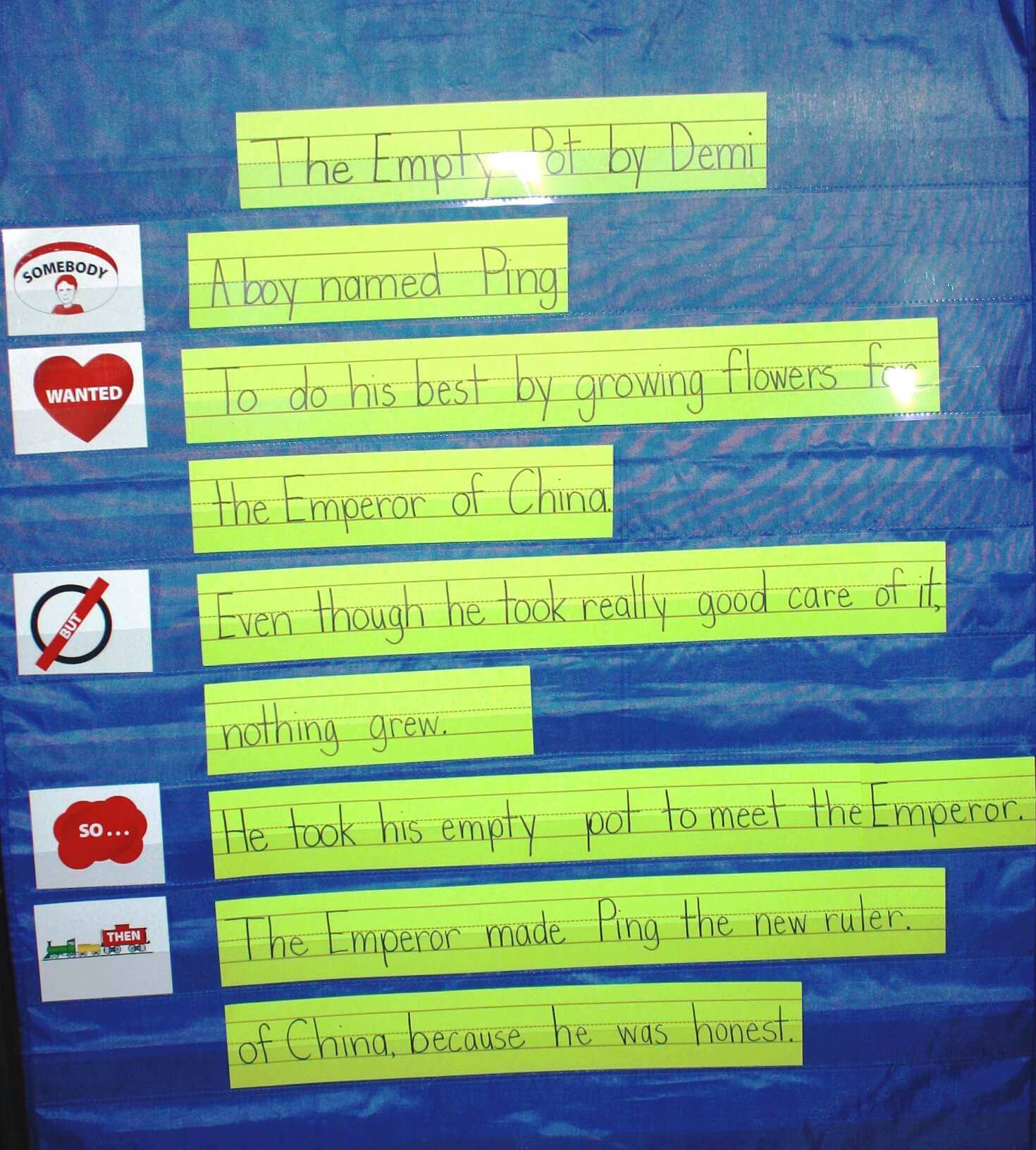
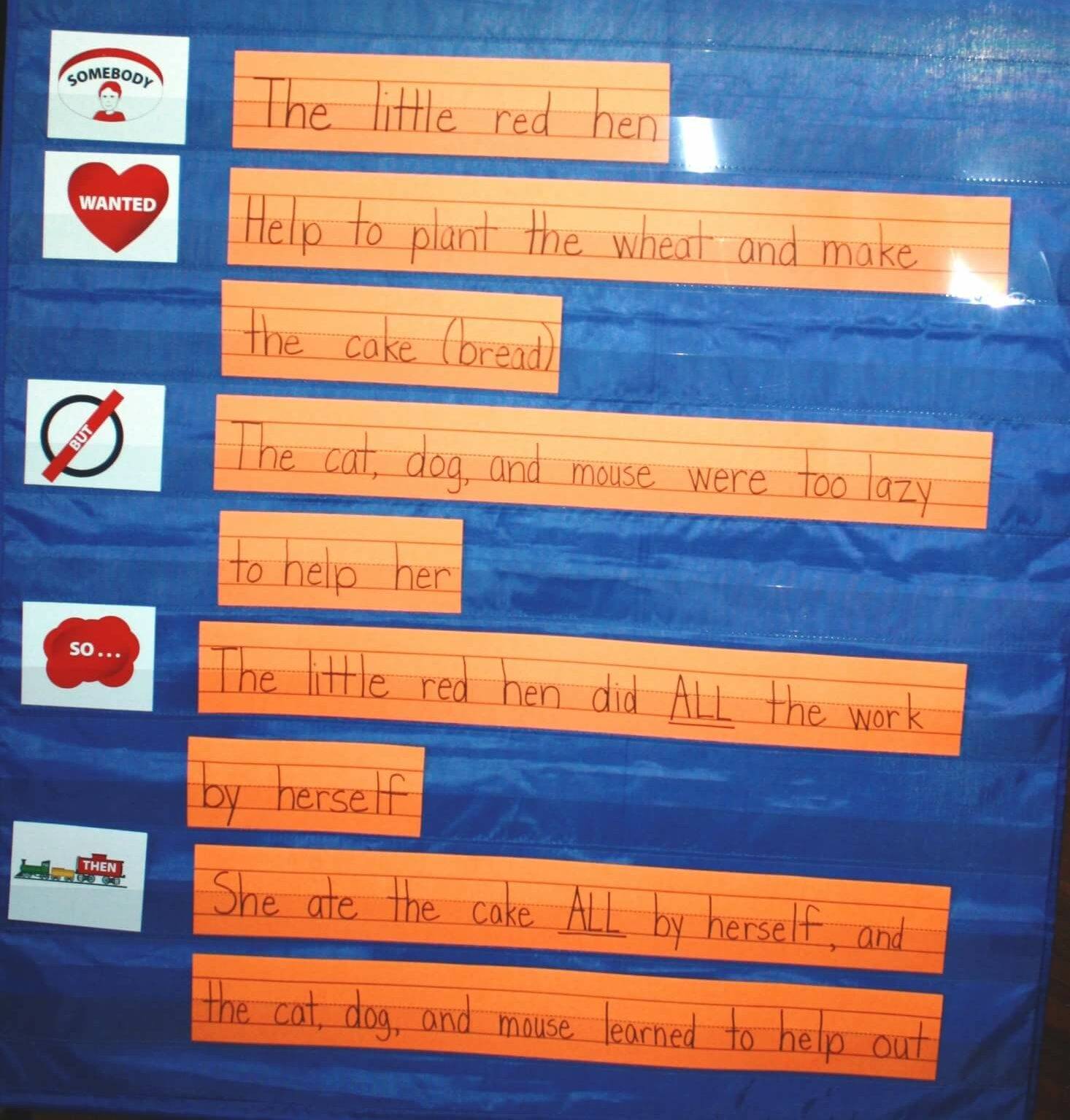
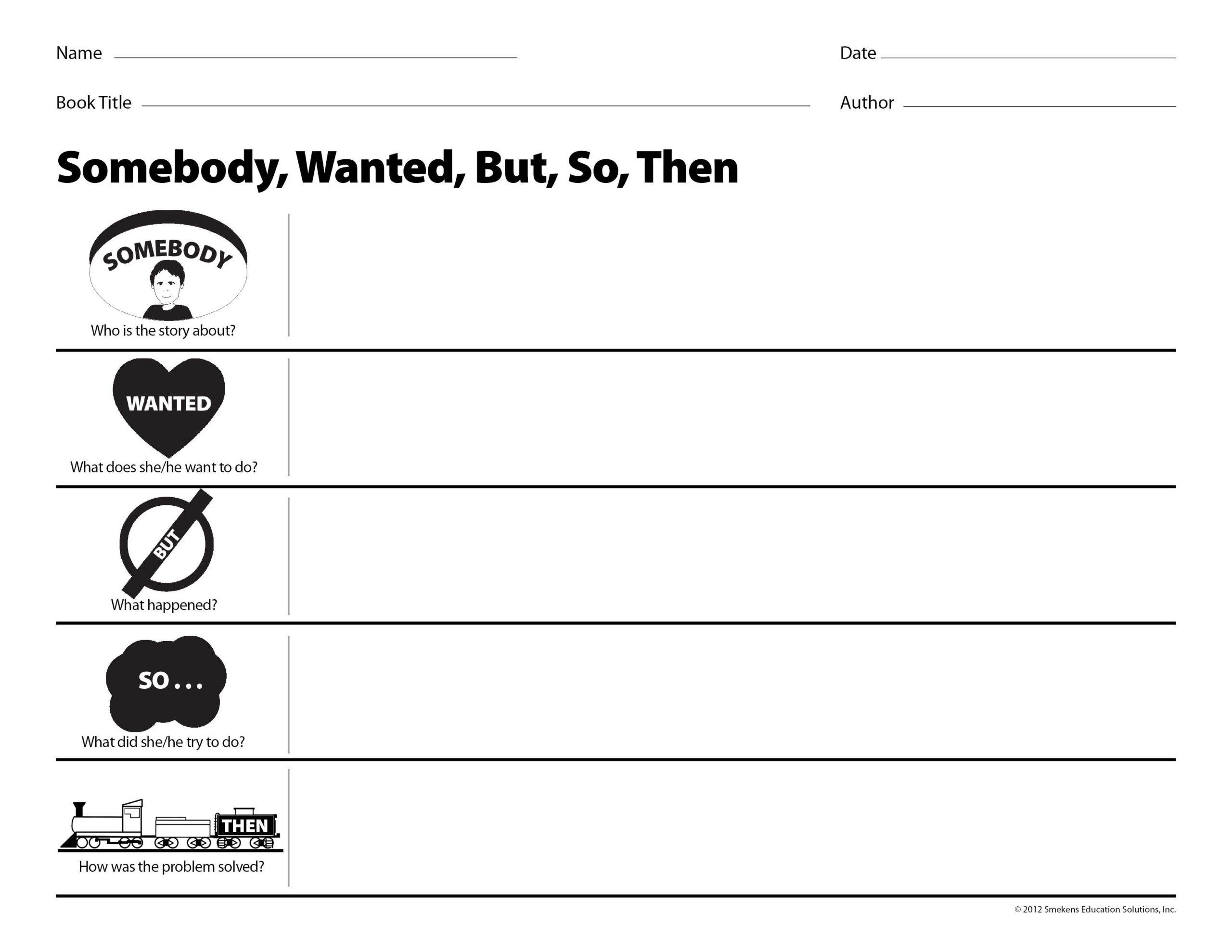
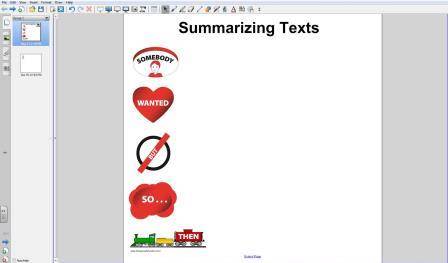

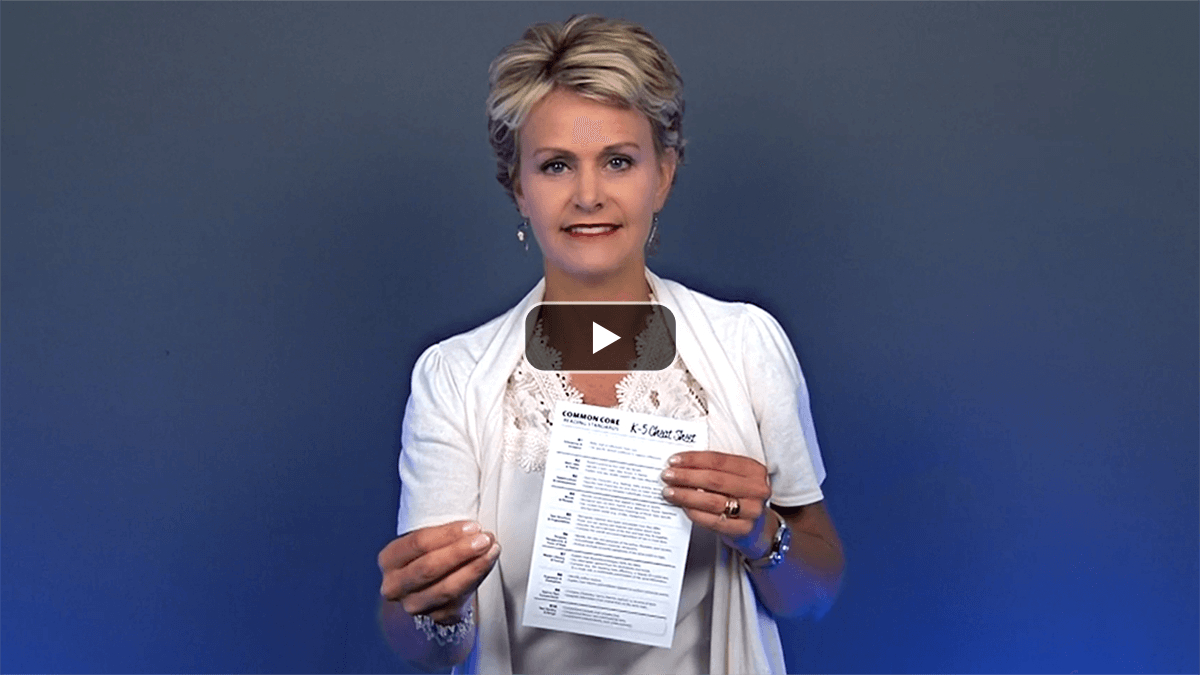
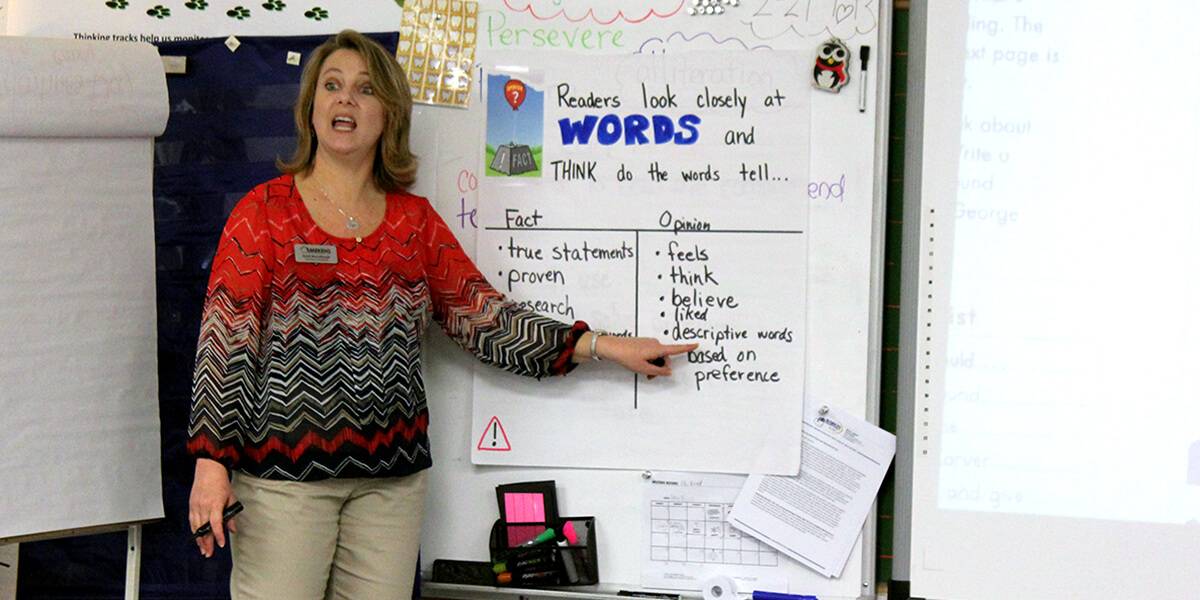
Excellent lesson. It was so much fun doing this lesson with my class. Thank you.
Thank you for your kind words! We are so glad to hear you were able to use this lesson with your students and had fun. That’s what makes learning stick!